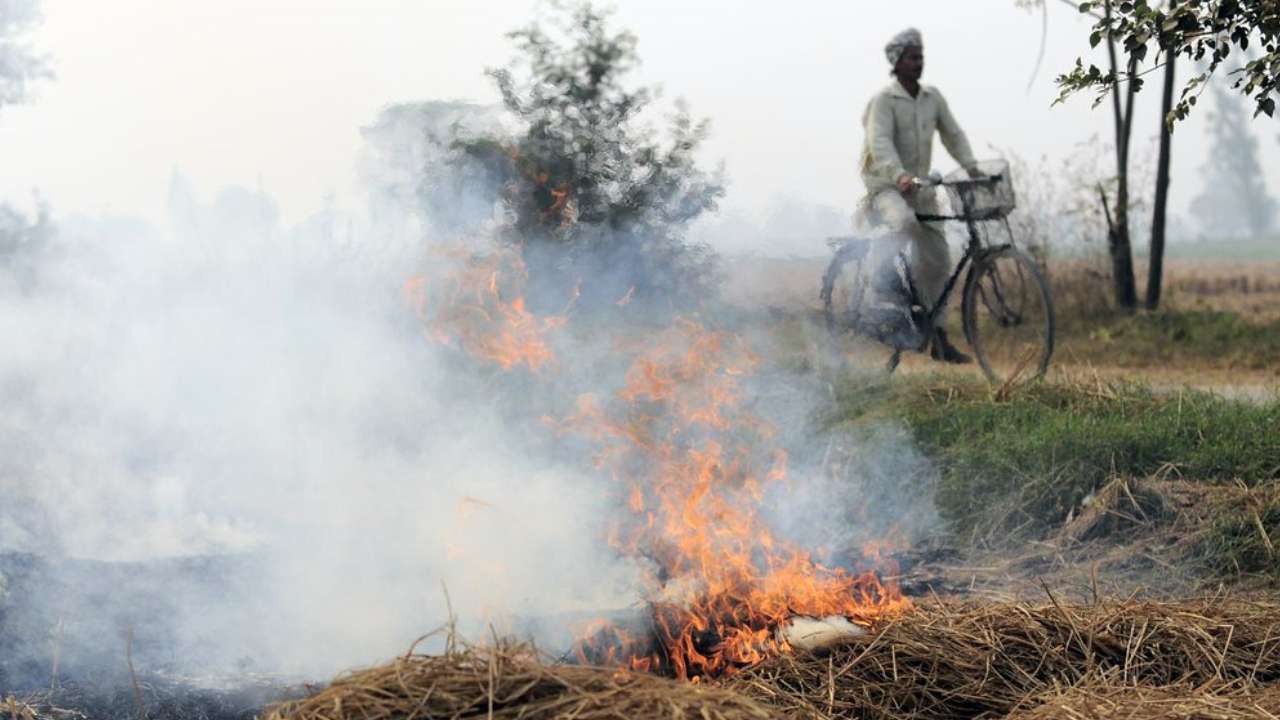The latest Air Quality Life Index by the Energy Policy Institute of University of Chicago has found air pollution to be one of the biggest health threats for India. Toxic air pollutants are reducing life expectancy by five years in the country, with pollution shortening lives by almost 10 years in Delhi, the most polluted city in the country.
The index is not the only study on India and its decades’ long struggle with pollution.
Air pollution was responsible for an estimated 90 lakh deaths in 2019, according to the report on pollution and health published in The Lancet Planetary Health in May. Of these, 16.7 lakh deaths were in India. The figure made up 17.8 percent of all deaths recorded in the country in 2019—the largest number of air pollution related deaths of any country.
The larger-than-life challenge yet remains royally ignored in India.
India’s Burden of Pollution Deaths
The majority of the 16.7 lakh air pollution-related deaths in India—9.8 lakh—were caused by PM2.5 pollution; another 6.1 lakh deaths were due to household air pollution. Although the number of deaths from pollution sources associated with extreme poverty (such as indoor air pollution and water pollution) has decreased, these reductions are offset by increased deaths attributable to industrial pollution (such as ambient air pollution and chemical pollution), the Lancet report pointed out.
Exposure to PM2.5—fine particles that can travel deep into the respiratory tract and lungs—can worsen underlying respiratory disorders and increase the risk of premature death from respiratory and cardiovascular disease or cancer.
In another report based on a study done at home, scientists from the National Environmental Engineering Research Institute (NEERI), Nagpur, underlined the need for “a very stringent” PM2.5 limit in India. The researchers suggested a progressive reduction aimed at the World Health Organization (WHO) limit of 5 micrograms per cubic metre.
For their study, the NEERI researchers picked multiple urban and rural sites across Nagpur, Maharashtra, a district among “the cleanest and greenest districts in India” with average PM2.5 levels consistently below the 40 micrograms per cubic metre limit over the past two decades.
The researchers found that the challenge India faces in curbing air pollution is much steeper than presumed. More than 40 among the 52 Indian cities with populations larger than one million had annual average PM2.5 levels higher than the current limit in 2019.
Scientists behind the Lancet study also believe that PM2.5 contributed to the vast majority of deaths reported in India due to pollution in 2019. This became more important in 2020, as air pollution was found to be associated with the severity of Covid-19.
“The World Health Organization (WHO) has substantially tightened its health-based global air quality guidelines, lowering the guideline value for PM2.5 from 10 micrograms per cubic metre to 5. This means that there is hardly any place in India which follows the WHO norms,” Dr Sundeep Salvi, Chair for Chronic Respiratory Diseases of the Global Burden of Diseases study (GBD-19), told The Indian Express. Dr Salvi was not associated with The Lancet Planetary Health report.
Air Pollution in South Asia
In no region of the world is the deadly impact of pollution more visible than in South Asia, where more than half of the life burden of pollution occurs, says the AQI index of the University of Chicago. “Residents there are expected to lose about 5 years off their lives on average if the current high levels of pollution persist, and more in the most polluted regions. Since 2013, about 44 percent of the world’s increase in pollution has come from India,” it adds.
The Lancet report pointed at the Indo-Gangetic Plains with the presence of many polluted cities, including New Delhi, with reasons like burning of biomass in households, followed by coal and crop burning.
It is not that there have been no initiatives to counter the problem. The problem is the mismatch between the magnitude of the problem and the limited words and deeds to address it.
It was in 2014, the year when New Delhi got both a new Prime Minister and Chief Minister and topped the WHO’s list of most polluted global cities. The findings say that the lives of Delhi residents are shortened an average of 6.3 years by air pollution. Now, how grave the problem may be for the capital, the subject still has not been able to deserve a tweet from Prime Minister Narendra Modi. While the apex court has been shouting on the matter, the absence of a robust centralised administrative system to drive air pollution control measures is elusive even after eight years of him in the top office.
It is also accepted that the problem has been longer in existence than the Indian Prime Minister in office. It was in the 1990s, when researchers first warned about a haze blanketing South Asia, from Pakistan through India to Bangladesh. In 1999, the Indian Ocean Experiment (INDOEX) field campaign discovered the broad extent of regional haze over the Indian Ocean. The subsequent years witnessed a realisation that the haze was also very widespread over the Indo-Gangetic Plains, said United Nations Environment Programme in 2002. The past decade, particularly, has only seen a dramatic increase in pollution with alarming effects on human health.
With decades of denial and inaction, today, pollution has become a problem for most north and central Indian cities. A December 2016 report by IndiaSpend found that Varanasi had the country’s most toxic air, followed by Allahabad, Patna and Kanpur. The study found that the quality of air in the Lok Sabha constituency of Narendra Modi was so bad that of the 227 days when air quality was monitored in 2015, not a single day was as per national air quality standards.
The number of deaths remains high despite Centre’s “focused” efforts against household air pollution, such as Pradhan Mantri Ujjwala Yojana. India developed a National Clean Air Programme, and in 2019, launched a Commission for Air Quality Management in the National Capital Region. The missing link that remains is a radical shift in the approach to pollution management efforts and a strategy to make it an initiative for every resident.
In an interview to the Indian Express, Professor Kalpana Balakrishnan, who co-authored the recent Lancet Commission on pollution and health, called for integrated surveillance platforms for health and exposure surveillance in India.
The experts particularly worry about the other two reasons behind pollution deaths in 2019, namely hazardous chemical pollutants that led to 17 lakh fatalities and lead pollution that took away 9 lakh lives.
“Population exposure surveillance via biological and environmental monitoring can inform risk attributions within health programmes already in place to reduce the burden of maternal and child health as well as non-communicable diseases. Impacts from lead as shown in the report, that impacts children’s IQ, really drive home the point of irreversible long-term damage for multiple generations. Without surveillance at scale, it is impossible to know what worked and what didn’t,” added the Dean (Research), Sri Ramachandra Institute of Higher Education and Research (Deemed to be University), Chennai.
Earlier, leaded petrol was the source of lead pollution. Now, we suffer unorganised recycling of lead-acid batteries and e-waste, spices, paints and other products with lead, pottery polished with lead salts and others.
“Globally more than 80 crore children (India alone contributes to 27.5 crore children) are estimated to have blood lead concentrations that exceed 5 µg/dL—which was, until 2021, the concentration for intervention established by the US Centers for Disease Control and Prevention. This concentration has now been reduced to 3.5 µg/dL,” Dr Salvi told The Indian Express.
With pollution affecting our families straight and Indian leaders looking elsewhere, it becomes pollution our problem only. The solutions are not buying expensive air purifiers or moving out of the city. It lies in building a strategy and system to regain the clean air we have lost.


























